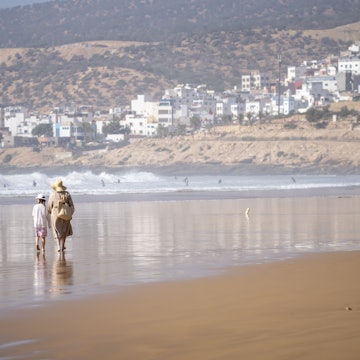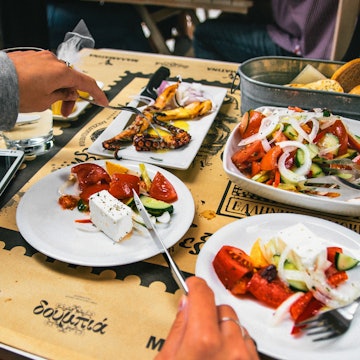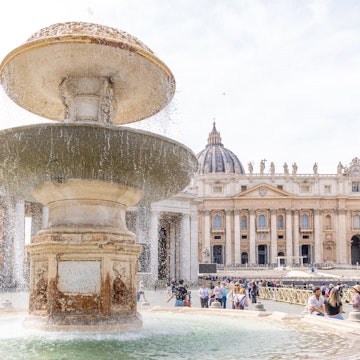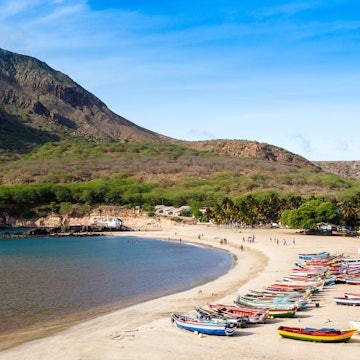

A 4X4 tour of the Viana Desert on Boa Vista, Cabo Verde. Marso/Shutterstock
Cabo Verde, a sprinkling of volcanic islands almost 600km off the coast of Senegal, has it all. Sweeping beaches of golden sand. Active, climbable volcanoes. West Africa’s best hiking. And a lively local music and arts scene.
Every island in the archipelago has its own unique charms, making each feel like its own distinct place. Given such variety, and also that getting to more than one island on the same trip can pose logistical challenges, you’ll likely want to home in on just one.
Here’s a full breakdown to help you pick the perfect Cabo Verde island to suit your interests and needs.

1. Sal
Best for family beach vacations
By far the most visited island, Sal is also the Cabo Verde destination with the most services, restaurants, excursions and bookable experiences. The epicenter of the tourist action is the town of Santa Maria, by far Cabo Verde’s biggest resort hub, which offers a world-class beach and more restaurants than most of the country’s other islands put together.
When you’ve had enough of caipirinhas and sun lotion on the sand, join a day excursion to intriguing spots with one of a multitude of local guides. You can let baby lemon sharks nibble your toes in the shallows off the east coast, float Dead Sea–style at the salt pans of Pedra de Lume, and spot turtles on the west coast.
Planning tip: Most bookable experiences make for an easy day trip from Santa Maria. There’s no need to book tours and excursions in advance; wait until you arrive to find the right guide for you.

2. Santiago
Best for history and culture
With the Cabo Verdean capital of Praia dominating its south coast, Santiago is the most populated island in the archipelago, and certainly has the liveliest feel. A short ride to the west of Praia lies Cabo Verde’s only UNESCO-listed site, Cidade Velha, once a major Portuguese colonial settlement and one that played a large part in the trade of enslaved West African people. Today, you can clamber around the ruins of cathedrals and monasteries, or have a bite to eat in Cabo Verde’s oldest street, the aptly named Rua da Banana.
While most head to Santo Antão for hiking, Santiago has a network of marked trails that runs the entire length of the island as well as associated infrastructure. Those trails reach a crescendo at Tarrafal, Santiago’s best beach resort.
Planning tip: Many choose to stay in Praia and take trips north. Instead, base yourself in northern Tarrafal, then venture south, for a much more pleasant experience.
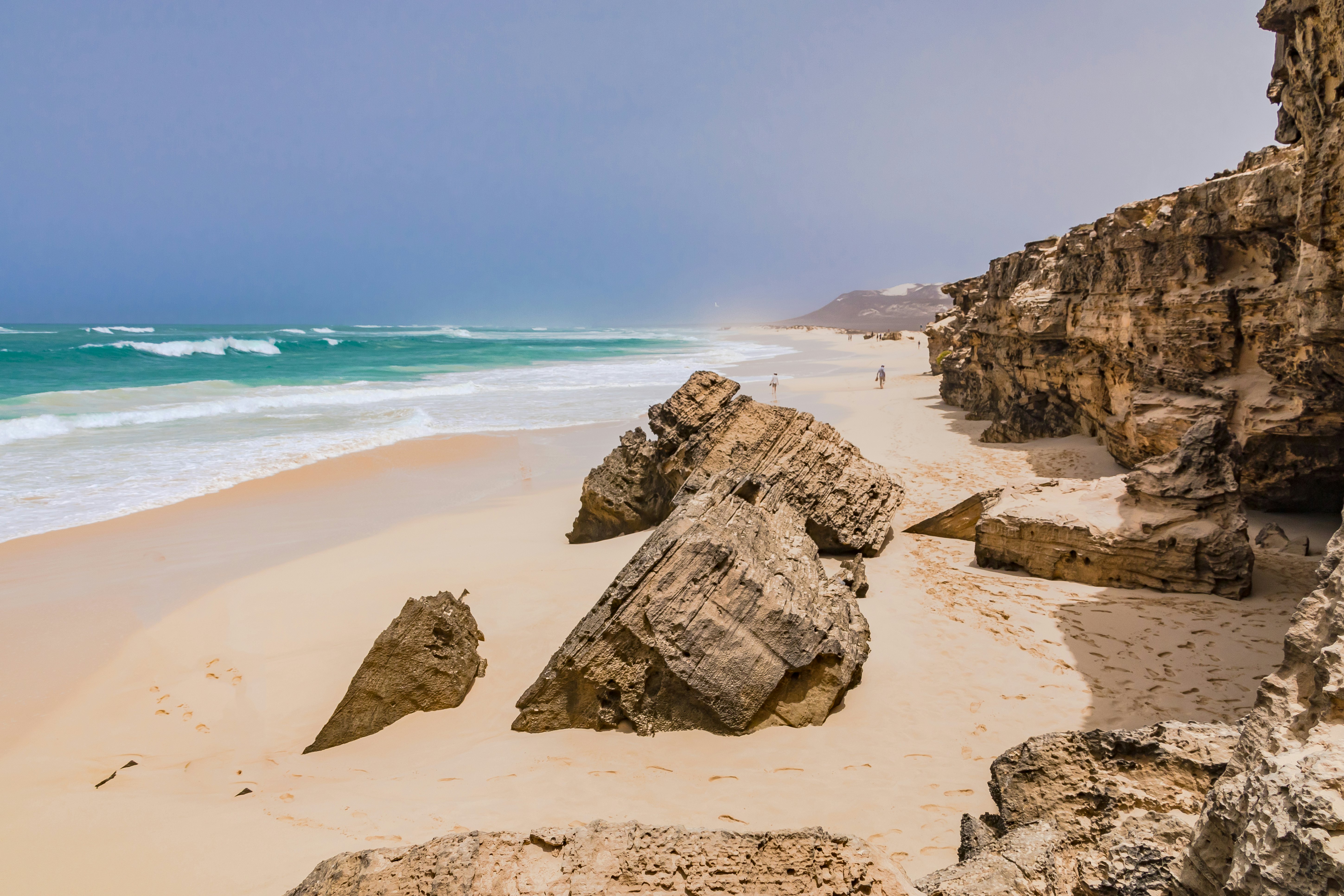
3. Boa Vista
Best for world-class beaches
Though divided from Sal to its north by a mere 40km of ocean, Boa Vista couldn’t be more different. Low-key and almost otherworldly, this is the island in the archipelago for those looking to escape, wander golden sands, and dream of pirates and shipwrecks.
The capital of Sal Rei has a lively visitor scene; innovative new restaurants, such as Bowlavista, pop up regularly. With their cool bars and shimmering white sand, the town’s beaches would be more than enough for most islands. Yet just a short 4X4 journey away, Boa Vista really has some truly world-beating strands, such as endless Santa Monica and the dunes of Varandinha.
Speaking of dunes, Boa Vista has its own stretch of desert (the Viana), where the sand is piled up to 50m high. It’s a magical place to sandboard by day and gaze up at the stars by night.
Planning tip: Boa Vista is best seen from the back of a 4X4 pickup, and plenty of local operators in Sal Rei are willing to take you out to ride those dunes.

4. Santo Antão
Best for hiking
Cabo Verde’s Jekyll and Hyde island, Santo Antão has two completely different sides. While marketing materials inevitably show hikers passing through dense, lush vegetation, around two-thirds of the island is dry and barren. That picture-perfect part of the island lies is the north, where you’ll find the Paúl Valley – arguably Cabo Verde’s top hike, with several routes passing through terraced farmland.
Along the way, you can sample the local grogue, a sharp, rum-like concoction made in small distilleries along the valley from the sugarcane that thrives there. At the top of the valley, O Curral restaurant is a superb place to replenish calories.
Planning tip: The only reliable ferry service in the entire archipelago operates between Mindelo on São Vicente and Porto Novo on Santo Antão. This means that this is the only pair of islands you can reliably plan to visit in one trip.


5. São Vicente
Best for culture
This island is all about its capital, Mindelo, Cabo Verde’s second city and its most intriguing. World-music fans will surely know the name of singer Cesária Évora, Cabo Verde’s most famous daughter, who was born and died in Mindelo. Her legacy is a part of an arts scene second to none in the East Atlantic; cultural highlights include the country’s top museum, the CNAD (National Centre for Arts, Craft and Design), whose galleries are packed with traditional handicrafts. Yet Mindelo is about more than just its jazz scene and art cafes: there’s a respectable beach to chill on, some great restaurants and the archipelago’s best fish market.
Planning tip: Mindelo is a place where it pays to go with the flow. There’s always something going on in town, from concerts to art shows, parties to street theater. Once you’ve unpacked, head out into the vibrant streets and let yourself be surprised.

6. Fogo and Brava
Best for coffee and wine
Out in the far west of the archipelago, Fogo and Brava are an Atlantic double act with an off-the-map feel. The biggest draw on Fogo is the huge crater of the active volcano that gave birth to the island millions of years ago. Incredibly, there are villages below the summit, which often get in the way of determined lava flows (last time in 2014).
The reason locals insist on living here is immediately clear: wine. Grapes love the volcanic soil in the caldera, and the local wine is special indeed. After sipping the local Chã das Caldeiras white, take a hike up the peak before boarding or seldding back down on the volcanic ash. That same volcanic soil also provides nutrients for coffee bushes, with plantations spread across the east of the island. Connoisseurs have long hailed Fogo coffee as some of the best beans in the world.
Brava is the most remote of Cabo Verde’s 10 islands and feels like a true escape from 21st-century tourism. The beach village of Fajã de Agua on the west coast is a particularly dreamy place.
Planning tip: The timing of ferry services and absence of flights means you can’t make a day trip from Fogo to Brava, so you’ll need to book at least one night in a guesthouse on the tiny island.
Marc DiDuca wrote Lonely Planet’s Pocket Cabo Verde guide, published in October 2024.










